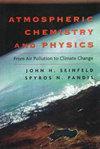夜间大气协同氧化减少生物排放物形成低挥发性有机化合物
IF 5.1
1区 地球科学
Q1 ENVIRONMENTAL SCIENCES
引用次数: 0
摘要
摘要。挥发性有机化合物(VOCs)通常会受到大气中不同氧化剂的协同氧化。然而,人们对大气中挥发性有机化合物的确切协同氧化机制及其在颗粒物形成中的作用仍然知之甚少。尤其是对协同氧化过程中的关键反应中间体--有机过氧自由基(RO2)的反应动力学研究很少。在这里,我们对 O3 和 NO3 自由基对 α-蒎烯(最丰富的单萜)的夜间协同氧化作用及其对高含氧有机分子(HOMs)和微粒形成的影响进行了实验和动力学模拟相结合的研究。我们发现,在 O3 + NO3 协同作用体系中,通过分解臭氧分解产生的克里基中间产物而大量形成 OH 自由基,与仅在 O3 体系中相比,CxHyOz-HOMs 的生成受到了极大的抑制,这主要是因为 NO3 氧化产生的 α-蒎烯 RO2 终止了臭氧分解和 OH 氧化产生的 α-蒎烯 RO2。测量与模型比较进一步表明,臭氧分解和 NO3 衍生 RO2 之间的终止反应的效率平均是 OH 和 NO3 衍生 RO2 的 10-100 倍。尽管在协同氧化机制中会产生大量有机硝酸盐,但 CxHyOz-HOM 形成的大幅减少导致超低和极低挥发性有机化合物的显著减少,从而大大抑制了新颗粒的形成。这项研究从机理和定量角度对生物源排放的夜间协同氧化化学反应提供了宝贵的见解,将有助于更好地理解大气中低挥发性有机化合物和颗粒物的形成。本文章由计算机程序翻译,如有差异,请以英文原文为准。
Nocturnal Atmospheric Synergistic Oxidation Reduces the Formation of Low-volatility Organic Compounds from Biogenic Emissions
Abstract. Volatile organic compounds (VOCs) are often subject to synergistic oxidation by different oxidants in the atmosphere. However, the exact synergistic oxidation mechanism of atmospheric VOCs and its role in particle formation remain poorly understood. In particular, the reaction kinetics of the key reactive intermediates, organic peroxy radicals (RO2), during synergistic oxidation is rarely studied. Here, we conducted a combined experimental and kinetic modelling study of the nocturnal synergistic oxidation of α-pinene (the most abundant monoterpene) by O3 and NO3 radicals as well as its influences on the formation of highly oxygenated organic molecules (HOMs) and particles. We find that in the synergistic O3 + NO3 regime, where OH radicals are abundantly formed via decomposition of ozonolysis-derived Criegee intermediates, the production of CxHyOz-HOMs is substantially suppressed compared to that in the O3-only regime, mainly because of the termination of α-pinene RO2 derived from ozonolysis and OH oxidation by those arising from NO3 oxidation. Measurement-model comparisons further reveal that the termination reactions between ozonolysis- and NO3-derived RO2 are on average 10 – 100 times more efficient than those of OH- and NO3-derived RO2. Despite a strong production of organic nitrates in the synergistic oxidation regime, the substantial decrease of CxHyOz-HOM formation leads to a significant reduction in ultralow- and extremely low-volatility organic compounds, which significantly inhibits the formation of new particles. This work provides valuable mechanistic and quantitative insights into the nocturnal synergistic oxidation chemistry of biogenic emissions and will help to better understand the formation of low-volatility organic compounds and particles in the atmosphere.
求助全文
通过发布文献求助,成功后即可免费获取论文全文。
去求助
来源期刊

Atmospheric Chemistry and Physics
地学-气象与大气科学
CiteScore
10.70
自引率
20.60%
发文量
702
审稿时长
6 months
期刊介绍:
Atmospheric Chemistry and Physics (ACP) is a not-for-profit international scientific journal dedicated to the publication and public discussion of high-quality studies investigating the Earth''s atmosphere and the underlying chemical and physical processes. It covers the altitude range from the land and ocean surface up to the turbopause, including the troposphere, stratosphere, and mesosphere.
The main subject areas comprise atmospheric modelling, field measurements, remote sensing, and laboratory studies of gases, aerosols, clouds and precipitation, isotopes, radiation, dynamics, biosphere interactions, and hydrosphere interactions. The journal scope is focused on studies with general implications for atmospheric science rather than investigations that are primarily of local or technical interest.
 求助内容:
求助内容: 应助结果提醒方式:
应助结果提醒方式:


